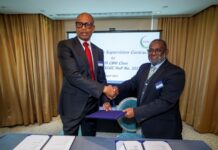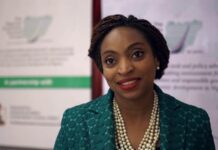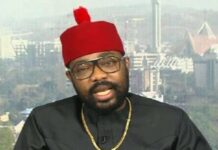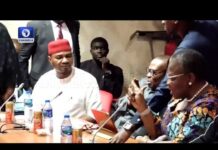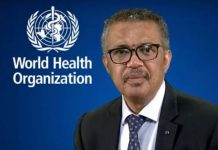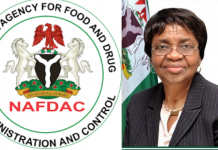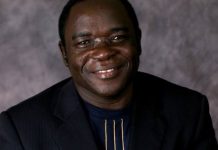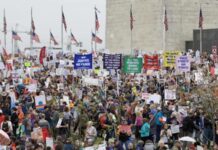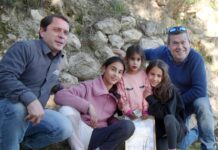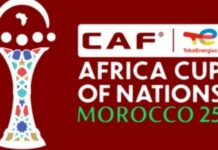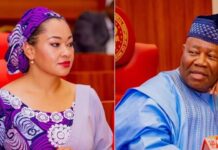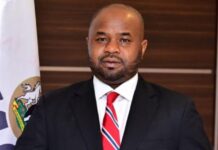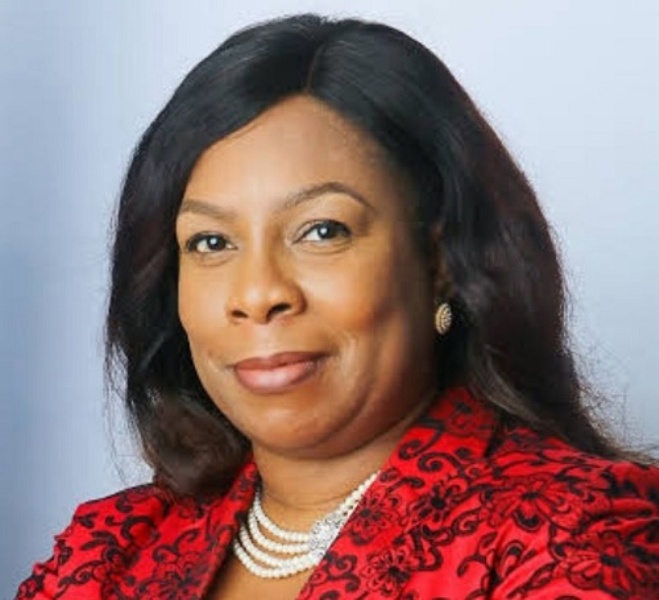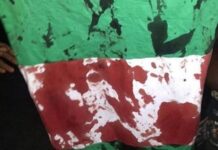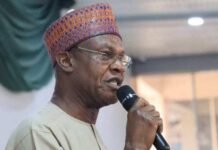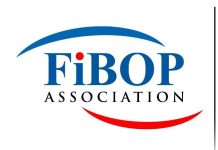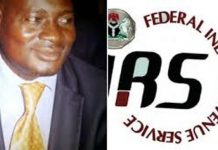The outgoing director general of the Nigerian Meteorological Agency (NIMET), Dr. Anthony Anuforom says his 10-year tenure has been eventful with world-class weather reporting facilities, accurate weather reporting system, partnerships with local and international organizations as well as ambitious plan to earn additional revenue apart from what it gets from the aviation and other sectors of the economy
By Ime Akpan
My scorecard as director general for 10 years
It was in 2007 that I got appointed as the director general for a first term of five years and got reappointed for a second tenure in 2012.
I was part of the setting up of the agency after we metamorphosed from a department to a parastatal. So the problems were a bit familiar. What were the problems? To observe weather we need our observatories, our synoptic stations. At that time I inherited 36 synoptic stations. So the very first thing I did was assessment of their capacities to do that fundamental job of observing the weather and recording data. When I did the assessment that is in terms of instrument availability, in order words, we measure certain variables. What are the instruments for measuring them? Are they available in all the 36 stations? If they are available, are they functional? So when I conducted that survey, I found out something that was really shocking. And that is out of the 36 synoptic stations or weather observatories across the country, only four of them scored above 50 per cent, the highest score was 64 per cent and that was very, very worrisome. So, we set out to address that issue, get the synoptic stations working so that we can measure weather variables. Of course it may interest you to know that in each synoptic station, there are 13 weather variables measured, each one is measured every hour of the day and in some cases every hour of the day at night. So we got to work, we started to build, make instruments available for weather observation. And so having done that, we went out to expand the number of stations. Today, we are leaving behind 54 weather observatories across the country. We not only re-enforce them in terms of making instruments available we also re-instrumented them as it were.
We had challenges of manpower and personnel. To increase staff morale and confidence, we had to re-train them. So we gave emphasis to training and re-training with the result that within a short time, we were able to train and re-train many of them. Having conquered that, we also moved on to the issue of more hi-tech equipment like weather radar. We were able to procure six weather radars although we were able to complete the installation of two; one in Port Harcourt and one in Abuja. We were working seriously to complete Yola and Maiduguri before the insurgency disturbed us and the Americans refused to come back for safety reasons. Although we are going back to that; we are travelling to the US to restart the process of getting them back to work.
How I fixed infrastructure, address staff matters
Well, it was in 2007 that I got appointed as a director general a first term for five years which ended in 2012. Of course after the first term, I got reappointed for a second tenure, that is 2012 that ends this year. Remember, we were a department of meteorological services in the ministry up until 2003 when the Act setting up NIMET was passed into law and then signed by the then president Olusegun Obasanjo. So when I started, having done about five years or so as director, the problems were not strange to me at all. There was the problem of infrastructure-instruments and equipment for measurement of weather. And of course I first of all did an assessment because at that time, from 2003 to 2007, I was not the boss. So I first of all did an assessment because at the time from 2003 to 2007. I went back to the fundamental things. Looking at the NIMET Act, our most fundamental work is to observe weather, record the data and issue weather forecast and predictions for all sectors of the economy. At that time I inherited 36 synoptic stations. So the very first thing I did was assessment of their capacities to do that fundamental job of observing the weather and recording data. What are the instruments? Are they available in all the 36 stations? If they are available, are they functional? So when I conducted that survey, I found out something that was really shocking. And that is out of the 36 synoptic stations or weather observatories across the country, only four of them scored above 50 per cent; the highest score was 64 per cent and that was very, very worrisome. So, we set out to address that issue, get the synoptic stations working so that we can measure weather variables. Of course it may interest you to know that in each synoptic station, there are 13 weather variables measured, each one is measured every hour of the day and in some cases every hour of the day at night, that is, for the 24-hour stations.
And so having done that, we went out to expand the number of stations; today we are leaving behind 54 weather observatories across the country. We have not only re-enforced them in terms of making instruments available we also re-instrumented them as it were, we also expanded the number. So that is the first thing we did.
Two, we had challenges of manpower and personnel. Staff morale was generally low; the people had no self-esteem. They were looked down upon because their salary was very poor, and you could see it in their dressing, the type of car they had, for the few that even had cars. So I took up the challenge of getting them better salary package. That we were able to accomplish. So today we are enjoying relatively better salary package. That is the NIMET salary package; that is what we are enjoying. Of course it is better than what we have in the civil service.
Thirdly, to also increase staff morale and confidence, we had to re-train them. So, we gave emphasis to training and re-training, with the result that within a short time, we were able to train and re-train many of our officers. Many of these trainings were done overseas.
Having conquered that, we also moved on to the issue of more hi-tech equipment. We were able to procure six weather radars although we were able to complete the installation of two-at Port Harcourt and Abuja airports. We were working seriously to complete Yola and Maiduguri before the insurgency disturbed us and the Americans refused to come back for safety reasons. We e are travelling to the US to re-start the process of getting them back to work…to finish up the other locations in addition to the two that are already functioning. Then there are other instruments such as the wind shear alert system. At the time we came in only Abuja airport had wind shear alert system. Today, we have 13 wind shear alert systems in the airports. When we came in there was only one upper air station in Abuja, even that one was a donation from the European Union under a research programme. Today, we have increased the number of upper air stations from one to eight. In fact the upper air station in Abuja, we are modernizing those installed automatic hydrogen gas generators there.
We had virtually no thunderstorm detectors, but now we have 20 of them across the country. There was no integrated weather observing systems, but today we have 14. These are the kind of things we have done in terms of hi-tech equipment.
Today, we have five zero air quality and ozone monitoring equipment from the zero that I inherited when I came on board.
Have you visited the instrument calibration laboratory? Have you visited the central forecast office? Have you visited the weather studio? These are world class facilities, and the culmination of all these is that our aeronautical weather service is ISO 9001certified. Now we are ramping up to a newer version of ISO certification, ISO 9001, 2000. We have started the process and very soon we are going to get that.
We looked at capacity for training because the fundamental job we do is weather observation. For you to do weather observation you need two years post secondary training at our MET school at Oshodi. Now if you go to the MET school at Oshodi, we have organized it with modern hostel and classroom facility. The workshop and laboratories are world class.
How meteorological information can grow the economy
The World Meteorological Organisation (WMO) has done an assessment and that assessment was done over 10 years ago. For every one dollar we invest in building capacity for weather, climate services, the benefit is seven dollars. That is there are seven-fold benefits and I will tell you how. That assessment was done 10 years ago, now the issue of climate change with the attendant climate weather that is destructive is worse today than what it was 10 or 20 years ago. If that assessment is done now the money you invest, if you invest some money in developing weather information to enable weather services provide early warning, such as the seasonal rainfall prediction (SRP), the benefits you will reap is huge. Imagine that using our SRP, farmers are advised better on when to farm, imagine the huge losses in terms of crop failure, if you plant at the wrong time. So by investing money, we are now able to advise the farmer better and they make informed decisions as to when to plant. They also make informed decision as to when to apply fertilizer, informed decision on how to avoid crop failure. So these are the benefits that we derive. Coming to the aviation sector, for the first 10 years, there is no single aviation accident or incident where weather is seen to be responsible, where lack of weather information, or because we didn’t know there will be storm and we flew into storm, there is none.
24-hour weather forecast for aviation sector
Now, the weather forecast we give to the aviation sector, don’t forget that aviation is probably one of the most regulated activities in the world. Our operations are as prescribed by the International Civil Aviation Organisation (ICAO); we do our job in conformity with ICAO standard and recommended Practices. So whatever ICAO says we should do that is what we are doing. That is why we are able to earn our ISO 9001. In order words, you are doing it the way they (ICAO) say it should be done. Now on the issue of whether we can give weather information ahead, yes of course. In addition to those forecasts when there is impending adverse weather we give out the information with sufficient insight, at times up to 24 hours or 12 hours. During the Christmas period for instance, whenever I was on duty, that time there were some days when the dust haze was really bad, it affected me. Because there are facilities for instance, the dust affecting us is generated in Niger and Chad, mainly from Niger and the air blows it southward to us. We have facilities, satellite receiving stations to tell us when there is dust uptake from Niger. Now when there is that uptake from the wind trajectory and speed, you can estimate when it will hit Maiduguri, Kano, or Katsina, Abuja. So at times this gives up to 12 times and we issue such alert. So apart from the forecast we issue weather alert as well.
Utilization of weather information by other sectors of the economy
One of the things we have learnt over the years is how to make people believe us. How does the farmer begin to believe that you can tell him when the rains will start? How does the farmer believe that you can tell him if you plant now, your crops will die? We have been singing that for a number of years. Gradually, of course for us to make them believe us, we have to show them that it is correct. So now we’ve been able to achieve that level of accuracy, so people have that confidence. So you see that we develop gradually in that direction.
In Europe and America, the level of education is very high, their attitude to science is better. They have better science culture than we do, so for them it is given, in fact they spend money to get weather forecast. But this one we are begging people to come and take, over there people pay huge sums of money. Now, we therefore have to generate that confidence and as today I can tell you that it is getting better and better. If you go and check our previous SRP presentations and my speeches, I keep calling people to come and partner with us. We are ready to partner with states. In every SRP we have presented, we invite commissioners responsible for agriculture, environment, health, water resources, we invite them over time. Many of them do attend; others may not respond, but those who started responding, they can see the result. After 2006 prediction, Katsina State said okay let us try this people. They invited us to present it to them in Katsina. When we went there the presentation we made was that our predictions are 75 per cent accurate.
We are working with some international organizations like the United States Agency for International Development (USAID; we are working with International Fund for Agricultural Development (IFAD), we signed a memorandum of understanding with the British American Tobacco Nigeria Foundation (BATNF).
Our development and revenue generation strategy
Coming to the raw economics of it, we drew up what we call NIMET’s five-year strategic development plan which has guided everything we have been doing. From the five-year strategic development plan, we revised it to what we call NIMET impact plan. Part of NIMET’s impact plan is commercialization because revenue from government was drying up. So we needed to do something to generate revenue. So we have a well structured commercialization initiative to diversify our revenue base. Presently, the bulk or our revenue, probably 90 per cent comes from what we get from aviation. And even what we are getting from aviation is meager compared to other agencies. I will give you an example. We get part of the landing charges collected by FAAN, only 1 per cent. The other one is en route and over flight charges collected by NAMA, 1 per cent. The third one is the ticket sales charge collected by NCAA we get 1 per cent. Look at the meager percentage compared to other agencies. So we cannot keep doing that. We said okay we can now venture into other sectors. We have the maritime sector. We said to ourselves that we have many ships coming in and out of Nigerian ports and they need weather information. Where are they getting weather information from? They are getting it from their home countries.
So we have now started the process of having a memorandum of understanding with the Nigerian Maritime Administration and Safety Agency (NIMASA) that we can give weather information and forecast to shipping lines. We started it long ago, we have perfected the MOU, we were to sign it since January but for one reason or the other it hasn’t quite clicked. It is a process we started even before I became director general because it was under my purview as director of applied meteorological services to do marine weather services. So that was what we started long ago, so we are hoping that when that clicks it will open up a new revenue stream for us. So, with everything we are doing apart from the other deliverables and benefits in terms of disaster risk reduction, in terms of prevention of reduction in crop losses, in terms of improving agricultural productivity, the naira and kobo side of it is getting more revenue from maritime services. So we are hoping that we will break into that area.

